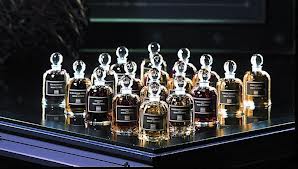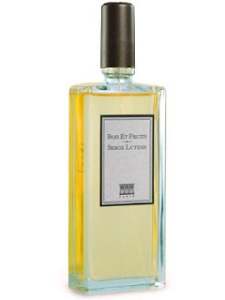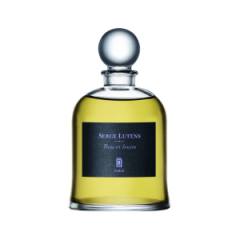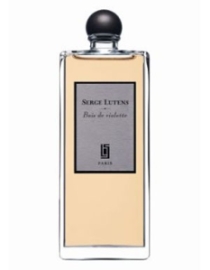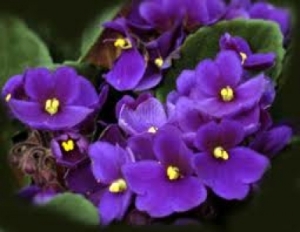A thick fog of red and brown spices covers the cedar forest, while the ground runs purple from a river of darkened fruits and sticky plums. The leaves are sprinkled with ginger and cumin, hiding the heavy peaches from sight. One giant cedar towers above all the rest, with dark, dry bark that is lightly peppered, and sometimes dusted with sweetened powder. Its ancient roots protectively cradle African violets that cast a purple glow like a beacon. Its fragrant smell briefly infiltrates the sticky, purple haze of gingered plums, but the cedar forest rules over them all. It’s a forest called Féminité du Bois.
Féminité du Bois is an eau de parfum that is considered both ground-breaking and quite revolutionary. At the time of its debut in 1992, there was nothing quite like its Oriental play on woody masculinity and feminine sweetness, all running on a river of heavily spiced, darkened fruits, and meant to evoke the precise smell of Morocco’s cedar wood.
Beyond that, however, Féminité du Bois has a very important history within the Lutens brand itself. It is essentially the mothership for many subsequent Lutens fragrances, particularly in his Bois Collection, and was the first to demonstrate the famous Lutens signature of sweet, spiced, dark fruits nestled in a wooded framework inspired by Morocco. Yet, Féminité du Bois originally began as a perfume for Shiseido, and it is one of the few Lutens creations that was not made solely by Christopher Sheldrake. Actually, most of the work was done by the famous Pierre Bourdon.
Luca Turin, the famous perfume critic, briefly talks about the origins of Féminité du Bois in his book, Perfumes: The A-Z Guide. He explains how the “woody-fruity structure of Féminité du Bois was first devised by the perfumer Pierre Bourdon, … and then passed on to perfumer Christopher Sheldrake, who developed it with Lutens… to keep it as dark and transparent as possible.” When Lutens decided to leave Shiseido and open his own perfume house, he needed more perfumes for his brand, and decided to do variations on his uber-successful Féminité. Enter, the Bois series, with such fragrances as Bois en Violette and Bois et Fruits. Shiseido, however, seems to have kept ownership of the Mother, Féminité du Bois, until it was finally and officially returned to the Serge Lutens marque in 2009.
Luckyscent elaborates further on the background, development and significance of Feminite du Bois (which I’ll spell from here on out without the accents for speed and convenience), as well as reformulations made to the scent in recent years:
A milestone in the history of contemporary perfumery, Féminité du Bois can be considered as the template of Serge Lutens’ trademark woods, fruit and spices variations. As the stories goes, Lutens, who had yet to launch his Salons du Palais Royal line, dragged the Shiseido and Quest teams to Marrakech to make them understand just what he was after: the quintessence of Atlas cedar. Christopher Sheldrake was the one who caught on; the great Pierre Bourdon completed the formula. The result was a breakthrough in the world of women’s fragrances: a dark, honeyed, animalic wood rubbed with candied fruit, sweet balms and the slow burn of spices, encrusted with the amethyst flash of violets.
Today, Féminité du Bois, the mother of all Lutens fragrances, has left Shiseido and found its true home. It has shed its strangely compelling dusty pink and plum flacon and Lutens has officially admitted that the formula was slightly tweaked to comply with new regulations, though he maintains that “the quality (creative and olfactive) remains authentic”. Aficionados may find the top notes a tad softer and the base a little muskier, but the fragrance is still entirely, deliciously Féminité du Bois.
Surrender to Chance has a similar comment about the new version (which it says was released in 2012, not 2009) and the reformulated changes:
Serge Lutens has noted that the formula has been altered to comply with the new IFRA regulations – softer top notes and a muskier base.
For Serge Lutens, the focus of the scent is not the plummy, spiced fruits for which he has become famous, but the cedar and the perfume’s twist on femininity. On his website, Serge Lutens says:
This scent expresses the masculine side of femininity and vice-versa.
It’s all about cedar. Wood accounted for 60% of the composition. Amazed, people called it revolutionary. The fragrance took on its own identity, which is the one thing that really matters to me.
As always, the official notes in a Serge Lutens fragrance are unknown, but Luckyscent says they include:
Ginger, cinnamon, clove, plum, peach, orange blossom, violet, cedar, sandalwood, vanilla, benzoin.
I would add beeswax or labdanum to that list, along with cumin. To my nose, there is definitely some cumin in Feminite du Bois, slight though it may be. As point of contrast, the original Shiseido Feminite is said to have the following elements:
With top notes of cedarwood, orange blossom, peach, honey, plum, and beeswax; middle notes of cedarwood, clove, cardamom, and cinnamon; and base notes of cedarwood, clove, cardamom, and cinnamon.
The modern, current version of Feminite du Bois opens on my skin with a dense, concentrated, syrupy blend of ginger, cooked plums, cumin and cedar, followed by lighter touches of orange blossom and cinnamon. The dark, almost resinous, stickiness of gingered plums is heavily bracketed by the dry, slightly smoky cedar, but a subtle, tiny pop of vanilla lurks at the edges. The orange blossom adds a floral sweetness to ensure that Feminite du Bois is never all about the spices or the woods, but it is a subtle touch that seems to fade quickly into the background.
As a whole, the most dominant elements in Feminite du Bois’ opening moments are the spices and fruits. The ginger is simultaneously pungent, slightly biting and fresh, crystallized and sweet. It is backed by a definite trace of cumin, adding to the Moroccan inspiration. It is a very subtle and muffled touch on my skin, though much more noticeable than the cinnamon that barely appears in any concrete way. As for the cloves, I’ve worn Feminite du Bois a number of times, and I’ve never noticed it. Generally, the ginger dominates them all, while the rest melt into the plum molasses merely as an abstract, very generalized “spice” accord.
Other elements are noticeable alongside the ginger. The peach is juicy, sweet, and thoroughly infused with the orange blossom. Then, there are the violets. Initially, they hover at the edges, noticeable primarily through their dewy, liquidy, slightly woody, green floralacy. Within 10 minutes, however, they turn more syrupy, lose some of their dewy delicacy, and seep onto center stage where they join the ginger plum molasses and the dry cedar.
Around the same time, Feminite du Bois undergoes a radical shift. The perfume turns very airy and light on my skin, losing at least 60% of its initial dense viscosity and weight. I cannot believe just how rapidly this perfume changes from the heavy, thick, sticky opening, almost as if the whole thing had been diluted with water.
It’s a shockingly fast transition to the transparency mentioned by Luca Turin, and it’s matched by a similar softness in sillage. Two big sprays from my atomizer yielded 2 inches in projection, at best, while double that quantity only increased the radius by another inch. Don’t get me wrong, Feminite du Bois is still very potent up close, but you have to be up close indeed. This isn’t a powerhouse scent by any means. From afar, it now feels practically gauzy as compared to the heft and syrupy density that I first experienced. And all this within a mere 10 minutes! It has to be due to the reformulation issue, and I suddenly understand why so many lovers of the vintage Shiseido version act so depressed when the subject of the modern Feminite comes up.
I find Feminite du Bois to be an odd scent on other levels, too. Primarily, the way that Feminite rapidly diffuses, as its notes lose shape, clear delineation and distinctness. It takes less than 30 minutes for the notes to blur into each other, and for Feminite du Bois becomes a haze of ginger, syrupy plums, and violets in a dark, spiced, dry, cedar embrace. The other elements pop up occasionally in the background, particularly the peach and, to a lesser extent, the cumin, but they’re rather weak. The whole bouquet hovers just an inch above the skin, at best.
The cedar grows stronger with every passing minute and eventually turns into the dominant element after 90 minutes. It is infused with plumminess, dusted with ginger, and has a light dash of powderiness as if from tonka. The violet retreats to the sidelines where it joins the peach, orange blossom and cumin in muted silence. In the base, there is the tiniest suggestion of labdanum, judging by the tell-tale trace of honeyed beeswax and a flicker of toffee lurking at the edges.
That’s really about it in terms of layers, complexity or major developments on my skin. At the end of the 4th hour, Feminite du Bois is a skin scent and an abstract blur of spiced, fruited, lightly powdered cedar with a mix of sweetness and dryness. Eventually, it turns into powdered, vaguely sweet woodiness, and dies away entirely. With 2 sprays from my atomizer, Feminite du Bois lasted exactly 6.75 hours on my skin. With double that quantity, the time frame was pushed out by another 75 minutes. Truth be told, I found the sillage and longevity to be disappointing.
In preparation for this review, I read back what I’d written on the famous Bois de Violette, one of Feminite’s most beloved offspring. I noticed that much of my experience with the Mother paralleled what I had previously gone through with the child. There is the same tendency for the secondary notes to rapidly hit small peaks before ebbing away like the tide. In the case of Feminite du Bois, first it was the florals which melted into the background about forty minutes into the perfume’s development, and which were no longer noticeable in an individual, distinct manner. Then, it was the turn of the spices which turned amorphous and abstract, having merely an indirect effect on the fruited cedar duo. Finally, just as with Bois de Violette, Feminite du Bois took exactly 90 minutes to turn muted and subdued, with blurred edges that made the fragrance feel like an out-of-focus snapshot of fruited, spiced woodiness.
For everyone else, the response to Feminite du Bois seems to depend largely on whether or not the person knew and loved the original Shiseido version. Newcomers to Feminite du Bois seem to thoroughly enjoy it. Old admirers generally bemoan what has happened with the reformulation, though there are a few commentators on places like Luckyscent who don’t find it too terrible, and one who insists that the new version actually lasts longer.
On Fragrantica, the vast majority generally like the scent, but a few have some issues. Cedar is a note which can translate to some noses as “pencil shavings,” and that is a point which comes up a few times. A handful found the cumin/wood combination to be difficult. Some women rave about how feminine the perfume is, while a few men found it wholly masculine. One woman’s extremely positive review reads as follows:
It opens on my skin with a burst of cedar, conjuring up images of bonfires in autumn. It’s like a nostalgic hug. As the heart notes begin to show themselves, I get spiced plum and ginger. A gorgeous, spiced fruit concoction that never gets sweet, but never too spicy either. The cedar and other wood notes stay lingering in the background, but allow the fruit and spices to steal the show during the dry down.
I adore how feminine this is without being floral or powdery in the slightest. It’s fruity without ever getting sickly and spicy/woody without ever getting overtly masculine. It even has peach that doesn’t smell like it belongs on a teenager! It’s basically everything I always wanted a perfume to be. [¶] Excellent longevity, very light sillage (which I appreciate here. I wear this like a secret).
As some of you know, I really like and own one of Feminite’s offspring, Bois et Fruits, so I was interested to read a Fragrantica review that compared the perfume mother with two of her Bois children:
One my favorite fragrance of all time. Feminite Du Bois smells like a slightly more feminized version of Bois et Fruits. It is lighter in weight to me than Fruits (although some people say the exact opposite). They smell extremely similar but BeF is more dense and spicy; FdB is more soft and feminine, especially the dry down. I love them both but if I had to choose one it would probably be FdB. Bois de Violette smells extremely similar to both also. I am amazed at how similar the Lutens “Bois” all smell.
It is impossible to put into words what smelling Feminite du Bois does to my brain. It is sort of an other worldly experience. It smells so good that it is distracting and literally makes it hard to focus on anything else when I get a whiff of it. I have heard that the original Shiseido version is ever better…and if that is the case I am certain my heart might stop if I ever smelled it. [Emphasis to names added by me.]
Some people find the scent to be all about roses, others about creamy woods, a handful mention Dior‘s Dolce Vita, and a few think it’s sexual as hell:
- oh my goodness. I’ve found the holy grail of perfumes. This is manifique’ …beautiful exquisite, definently unisex however leans more twords feminine. Just a perfect rose blend, not too much cedar just the right amount and the spice pepper is perfect.
- This is a woody rose fragrance, but on top of this is a prominent herbal-medicinal smell, particularly on initial application. As this medicinal smell fades, it becomes warm and sensuous and very likeable. It is for the evening, but does not screech sexuality – rather it is deep and womanly.
- it is beautiful! I can smell the resemblance to Dolce Vita, but this one is much more woody and less sweet. In the drydown I detect an animalic element, not at all evident from the beginning. Feminite du Bois speaks of an almost primitive, raw femininity that not everybody can handle. But if you have the persona to wear it, it will be a combination one of a kind!
- Feminite du Bois by Serge Lutens is a highly sexed and slightly sloshed slice of everyday bohemia. [¶] It dances along the line between near propriety and beyond the pale and ends up firmly planting its big feet on the wrong side of the tracks. [¶] After an early and brief spring of orange blossom and a slightly boozy, on the turn peach, the foliage and fruits give way quickly to the main part of the tree and the backbone of the perfume, the trunk. [¶] This is a fragrance that never fails to get and give good wood.
And the most hilarious assessment of them all:
Pencil shavings, erasers, and sweaty, over- sexed nether regions ensconced in powder and petals on a dark forest floor. This is female, dark female, at its most natural and primal realm, all possible elements included. This is the fragrance of a pinned up librarian by day, sex goddess by night. The lady is not what she seems…
The detractors are louder on Luckyscent, though not always about the actual fragrance itself:
- The first Serge Lutens I have disliked. The combination of cinnamon, cedar and musk has a simultaneously antiseptic and Aden quality that is headache inducing.
- This was a gorgeous light and feminine sandalwood for all of the six minutes that it lasted on my skin. I’m impressed by the elegance of the wood mixed with light floral notes but not by the lack of durability.
- Well, not bad, but nothing special. Rather flat scent.
- i have 1992 feminitie de bois, this is not even close. really not the same. very dissapointed when i compared
That comment about Feminite du Bois lasting a mere 6 minutes might be hyperbole, but perhaps not by too much. I’ve read several comments on Fragrantica and elsewhere saying that the perfume lasts a mere 15 minutes, 45 minutes, or just a brief few hours. The very soft, intimate sillage doesn’t help in making the perfume’s presence known. However, for a small minority of people, Feminite du Bois was quite long-lasting. On Fragrantica, the votes break down as follows:
- Longevity: 42 chose Moderate (3-6 hours), followed then by 20 votes for Long Lasting (7-12 hours) and 8 for Very Long-Lasting (12+ hours).
- Sillage: 45 for Moderate, 23 for Soft, 20 for Heavy, and 11 for Enormous.
I suspect that Feminite du Bois is a fragrance which will require a good number of sprays to really last, but which will always be extremely discreet and unobtrusive in projection unless your skin really amplifies perfume. Thankfully, the perfume is quite affordable on a number of discount retail sites, thereby enabling you to spray with wild abandon if you want to increase its longevity. In the Details section below, you will find links to places which offer Feminite du Bois for as low as $68 in lieu of the usual retail price of $130.
The bottom line for Feminite du Bois really comes down to a few things. If you’re a hardcore Lutens fan who hasn’t tried either version of Feminite du Bois, you should explore the new one — if only to know the Mothership for the Lutens signature as a whole. If you knew the original Shiseido legend, however, odds are that you’ll be disappointed with the reformulated, weakened version. And if you’ve never tried either one or if you are generally unfamiliar with the Lutens line, you should give Feminite du Bois a sniff provided that: you enjoy very woody, spiced, unisex Oriental fragrances; and you don’t mind scents that are initially heavy in feel, but then quickly become soft, sheer, and intimate. Ideally, you shouldn’t mind a bit of cumin or some sticky, fruited sweetness, either. If any of that sounds like you, then Feminite du Bois may be right up your alley.















